#1730s
Text

Michele Marieschi - The Grand Canal with Santa Maria della Salute
(ca. 1738 - 1740)
92 notes
·
View notes
Photo

Wentke (Gown)
Mid 18th Century
The Netherlands
Women in Hindeloopen, a town in the northern Netherlandish province of Friesland, traditionally wore this type of striking lightweight coat, called a wentke, on special occasions. Beginning in the mid-eighteenth century, wentkes were usually made of boldly patterned Indian chintzes, and contrary to the custom in the rest of Europe of confining chintz to casual and private occasions, residents of Hindeloopen elevated this exotic fabric to a formal status. The wentke was often worn with other garments of Indian cotton. (The MET)
Peabody Essex Museum (Object Number: 2012.22.15)
#wentke#gown#jacket#georgian#1730s#1740s#1750s#1760s#regional fashion#18th century#dutch#the netherlands#blue#cotton#india#chintz#peabody essex museum#popular
3K notes
·
View notes
Text
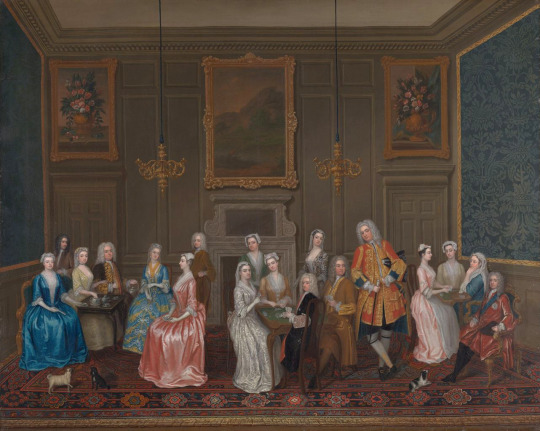


1730 Charles Philips - Tea Party at Lord Harrington's House, St. James's
(Yale Center for British Art)
201 notes
·
View notes
Text

Tea pot, 1730, Holland.
149 notes
·
View notes
Text

Family group portrait by Martin van Meytens the Younger, 1730-31 Sweden
#sweden#1730s#1730#1731#family#18th century#mdp18th c.#martin van meytens#martin van meytens the younger#18th c. sweden#dress up#fancy dress#masquerade
160 notes
·
View notes
Text
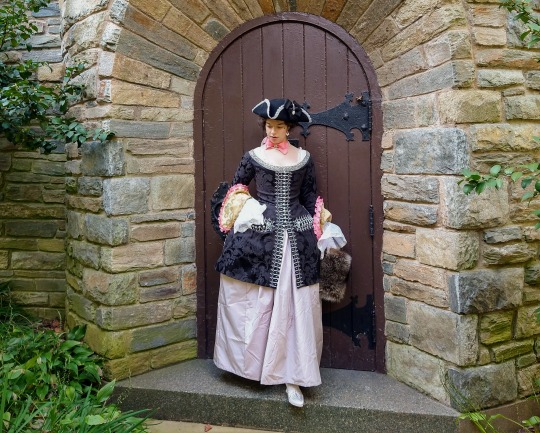
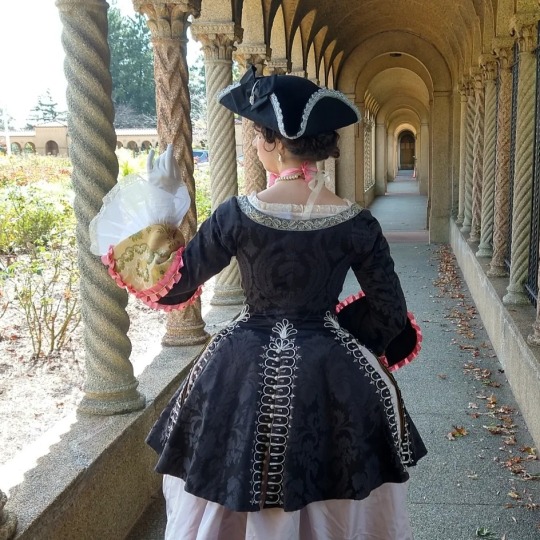
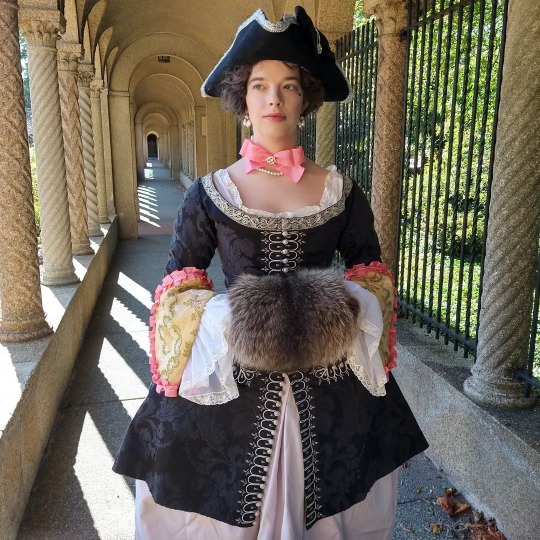
This jacket is the result of more than 2 and a half years of work, entirely handsewn! It represents the interest in equestrian and equestrian-inspired clothing as fashionable attire in Europe during the late 17th and into the 18th centuries.
I copied it from a jacket held by the Met Costume Institute, accession number 1981.314.2. When I emailed out to them for more information about the jacket, one of the collections people was even kind enough to pull it out of storage and take some detailed shots of the exterior AND interior (thanks Marci!!!)
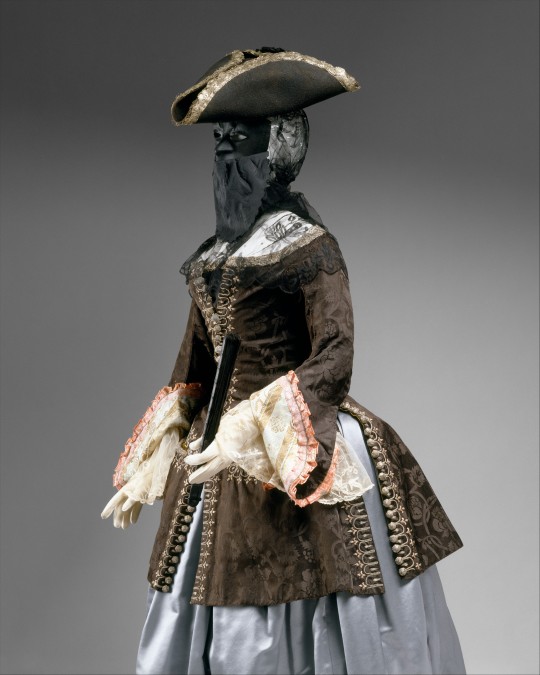
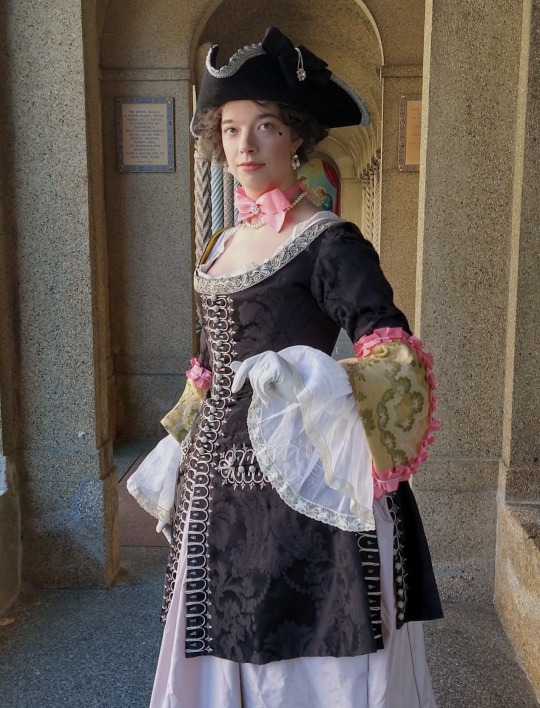
The Met dates it to the 2nd quarter of the 18th century which could be true--but there are several features of this jacket that could easily be dated earlier to the late 17th century, like the button size and layout. I plan to mull over this more in a later post. At least, I would definitely place it in the earlier end of that 1725-1750 range. However, I chose to style it for the 1730s/1740s because it's Fun For Me 🙂!
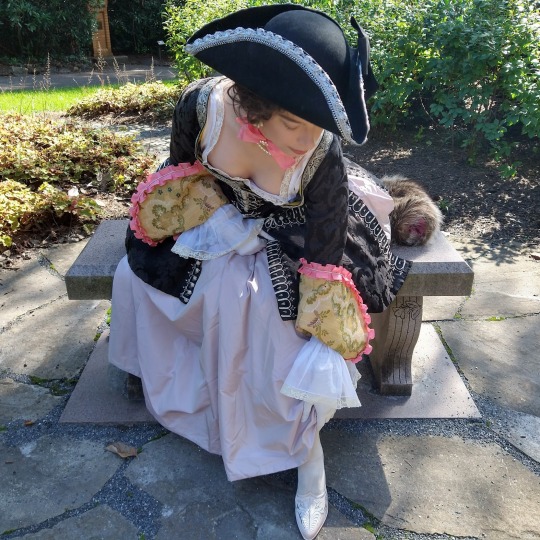
One of the most fun parts was gathering accessories to go with the jacket! I steamed a wool hat blank into the tricorn shape and applied the silver trim, made some detachable undersleeves based on paintings by Pietro Longhi, and threw together a matching neck ribbon as if I was some kind of ornamental poodle
#historical costuming#hand sewing#18th century#clothing reconstruction#riding habit#1720s#1730s#1740s#handsewn
82 notes
·
View notes
Text


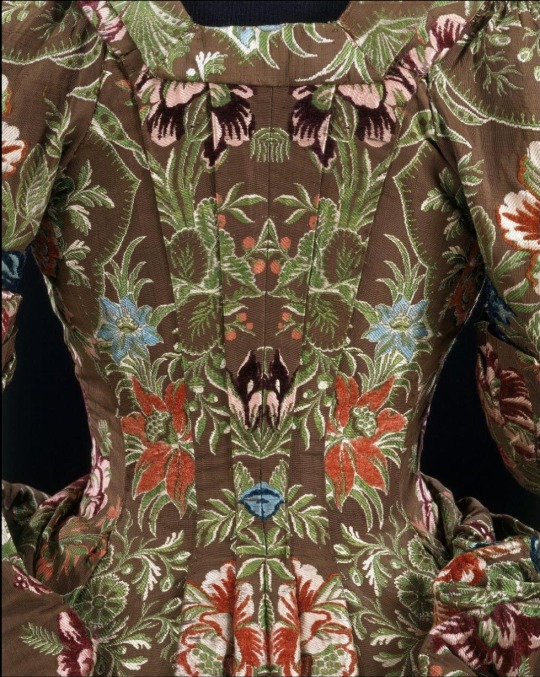



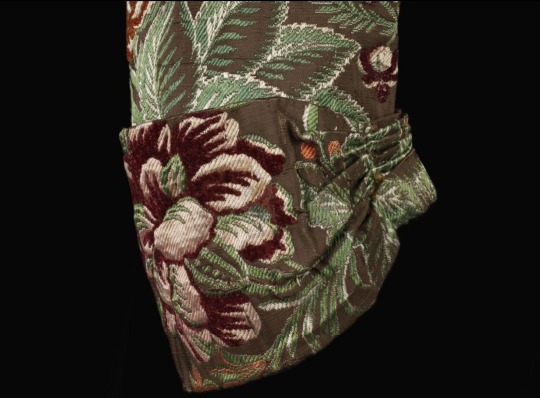
A woman's mantua and petticoat, British, 1735-1740, brown silk, brocaded in floral design with rust, maroon, blue floss and chenille, Spitalfields, c1732; altered 1870-1910
#18th century#18th century fashion#spitalfields silk#fashion history#historical fashion#mantua#1730s#1730s fashion#silk
156 notes
·
View notes
Text

Pink silk robe volante, 1720-1735.
Palais Galliera.
#1720s#1730s#1720#1720s dress#1730s dress#robe volante#womenswear#extant garments#dress#18th century#palais galliera#pink#silk
68 notes
·
View notes
Text

The American English expression "fried chicken" was first recorded in the 1830s, and frequently appears in American cookbooks of the 1860s and 1870s. The origin of fried chicken in the southern states of America has been traced to precedents in Scottish and West African cuisine. Scottish fried chicken was cooked in fat, and West African fried chicken added different seasonings,and was battered and cooked in palm oil. Scottish frying techniques and African seasoning techniques were used in the American South by enslaved Africans

Fried chicken provided some means of an independent economy for enslaved and segregated African-American women, who became noted sellers of poultry (live or cooked) as early as the 1730s.Because of the expensive nature of the ingredients, it was, despite popular belief, a rare dish in the African-American community reserved (as in Africa) for special occasions.When it was introduced to the American South, fried chicken became a common staple. Later, as the slave trade led to Africans being brought to work on southern plantations, the enslaved people who became cooks incorporated seasonings and spices that were absent in traditional Scottish cuisine, enriching the flavor. Since most enslaved people were unable to raise expensive meats, but were generally allowed to keep chickens, frying chicken on special occasions continued in the African-American communities of the South, especially in the periods of segregationthat closed off most restaurants to the African population

American-style fried chicken gradually passed into everyday use as a general Southern dish, especially after the abolition of slavery, and its popularity spread. Since fried chicken traveled well in hot weather before refrigeration was commonplace and industry growth reduced its cost, it gained further favor across the South. Fried chicken continues to be among this region's top choices for "Sunday dinner". Holidays such as Independence Day and other gatherings often feature this dish. During the 20th century, chain restaurants focused on fried chicken began among the boom in the fast food industry. Brands such as Kentucky Fried Chicken (KFC) and Popeyes expanded in the United States and across the world.

#african#afrakan#kemetic dreams#africans#brownskin#afrakans#brown skin#african culture#african food#african cuisine#fried chicken'cjicken#doro#kentucky fried chicken#popeyes#abolition of slavery#south#united states#africa#scottish#1730s#slave trade
81 notes
·
View notes
Text

Frances Arnold, William Hogarth, 1738-40
#frances arnold#William hogarth#hogarth#1738#1739#1740#1730s#1740s#1700s#18th century#painting#art#portrait
75 notes
·
View notes
Text

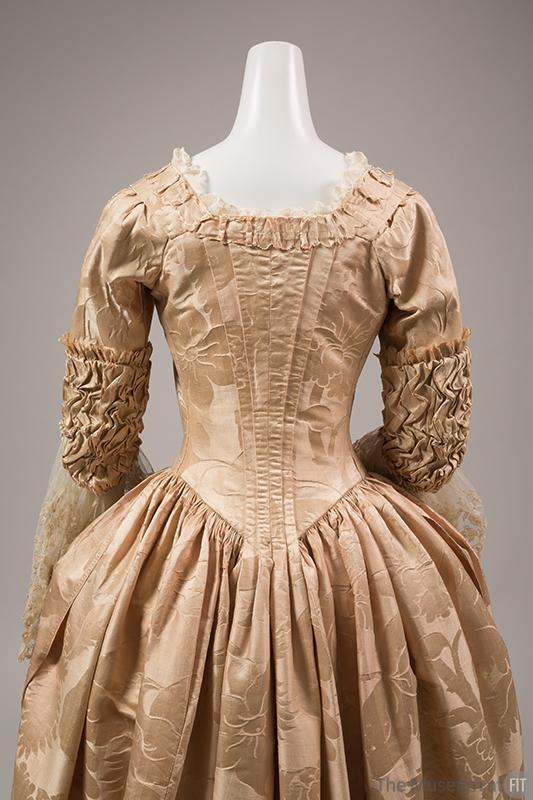
Silk damask robe a'langlaise. Spitalfields silk c.1735, dress c.1765.
via fashionmuseum.fitnyc.edu
#fashion history#history of fashion#historical fashion#history of dress#18th century#18th century fashion#robe a l'anglaise#spitalfields silk#1700s#1700s fashion#extant garments#pink#1730s#1760s#e
24 notes
·
View notes
Text

Miniature English Drawing Room of the Early Georgian Period, 1730s
Narcissa Niblack Thorne & Unknown Artisans
c.1937
Art Institute of Chicago (Reference Number: 1941.1192)
#miniature#miniature art#art history#interior design#architecture#1730s#georgian era#georgian architecture#english#united kingdom#18th century#thorne rooms#art institute of chicago
241 notes
·
View notes
Text

1736 Petrus Johannes van Reysschoot - Danvers Osborn, Governor of New York
(Private collection via Sotheby’s)
218 notes
·
View notes
Text
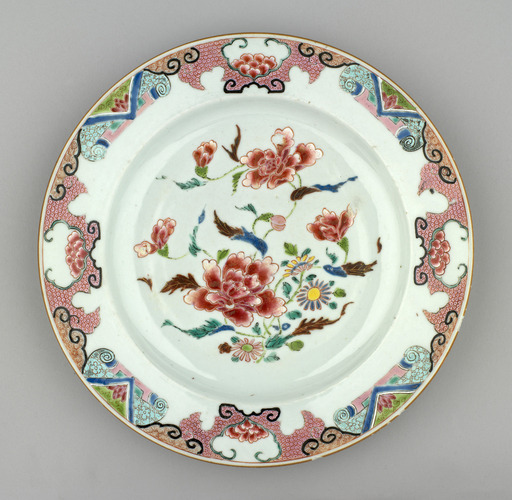
Plate, 1730-50, China.
139 notes
·
View notes
Photo

Portrait of a woman as Flora by Jacques-François Delyen, circa 1730-35
115 notes
·
View notes
Photo
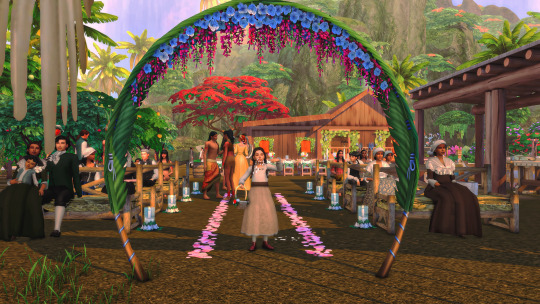

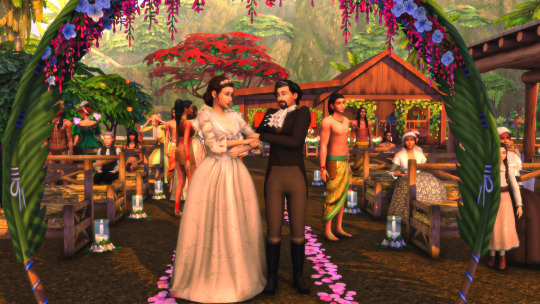

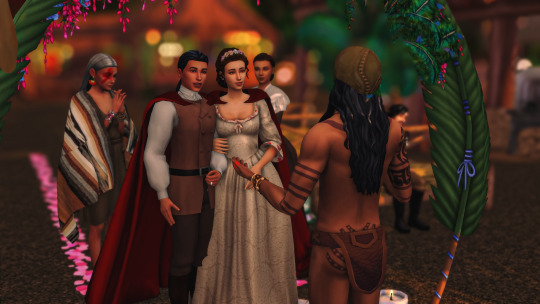
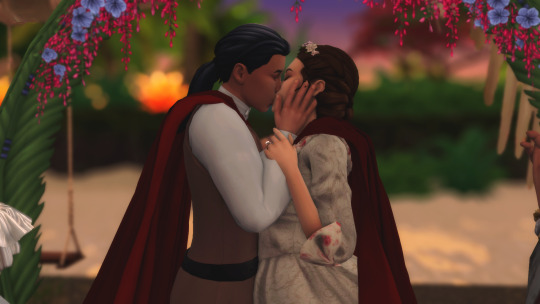
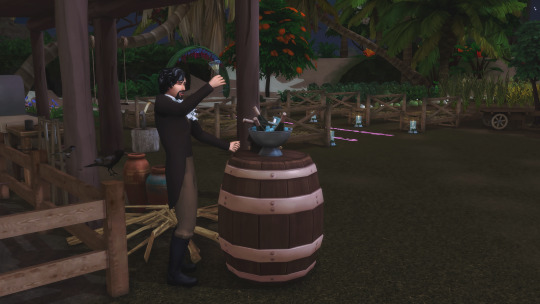
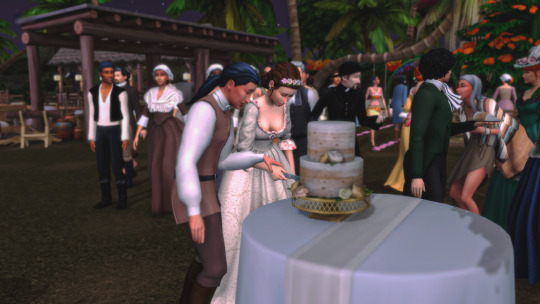


Isabel and Andrea worked diligently within their tight time constraints, successfully arranging all the details for the wedding. The ceremony took place on a stunning winter afternoon. In the presence of their family and friends, Diego and Andrea exchanged their vows. To begin, Father Soledad officiated the wedding following Catholic customs. Following this, Kasike Hatuey conducted the Caney circle ceremony.
Wrapped in the Conjugal blanket by Isabel and Diego's grandmother, the couple was presented with two small plates, one with turkey and the other with cassava. They took turns feeding each other while reciting the following heartfelt words: "By giving you this token of my love, I vow to feed you with my devotion. I vow to nourish you with the food of my soul from this day on." With these words, the Taino marriage ceremony came to a close.
A small reception followed, and the townspeople celebrated the newlyweds. Antonio delivered a heartfelt speech and raised a toast, which brought tears to Andrea's eyes. She was not only delighted to be united with Carabi but also relieved to leave behind the recent challenges and embark on her new life with her beloved husband.
Diego Carabi Serrano & Andrea Beatriz Sánchez de Serrano’s portrait-Winter 1730


Beginning | Previous | Next
#sanchezlegacy#ts4 extreme decades challenge#ts4 gameplay#ts4sometimesstory#historical gameplay#1730s#ts4 story#weddingportraits
34 notes
·
View notes